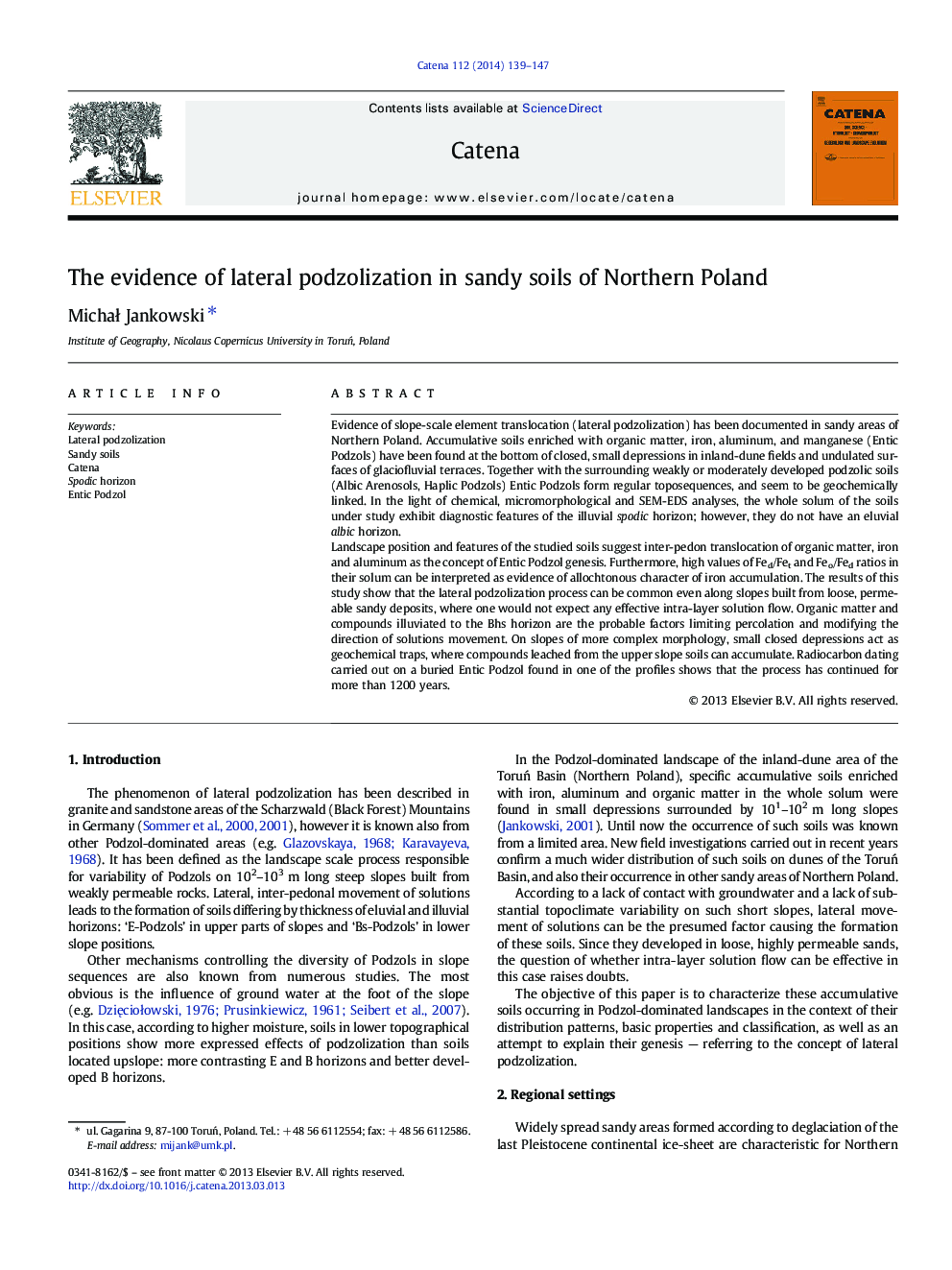| Article ID | Journal | Published Year | Pages | File Type |
|---|---|---|---|---|
| 4571561 | CATENA | 2014 | 9 Pages |
Evidence of slope-scale element translocation (lateral podzolization) has been documented in sandy areas of Northern Poland. Accumulative soils enriched with organic matter, iron, aluminum, and manganese (Entic Podzols) have been found at the bottom of closed, small depressions in inland-dune fields and undulated surfaces of glaciofluvial terraces. Together with the surrounding weakly or moderately developed podzolic soils (Albic Arenosols, Haplic Podzols) Entic Podzols form regular toposequences, and seem to be geochemically linked. In the light of chemical, micromorphological and SEM-EDS analyses, the whole solum of the soils under study exhibit diagnostic features of the illuvial spodic horizon; however, they do not have an eluvial albic horizon.Landscape position and features of the studied soils suggest inter-pedon translocation of organic matter, iron and aluminum as the concept of Entic Podzol genesis. Furthermore, high values of Fed/Fet and Feo/Fed ratios in their solum can be interpreted as evidence of allochtonous character of iron accumulation. The results of this study show that the lateral podzolization process can be common even along slopes built from loose, permeable sandy deposits, where one would not expect any effective intra-layer solution flow. Organic matter and compounds illuviated to the Bhs horizon are the probable factors limiting percolation and modifying the direction of solutions movement. On slopes of more complex morphology, small closed depressions act as geochemical traps, where compounds leached from the upper slope soils can accumulate. Radiocarbon dating carried out on a buried Entic Podzol found in one of the profiles shows that the process has continued for more than 1200 years.
•Unknown accumulative soils developed in loose sands have been characterized.•Commonness of lateral podzolization in the topographic scale has been documented.•Lateral podzolization is revealed in small depressions acting as geochemical traps.•Pedosphere is the agent determining element translocation directions in permeable sands.
